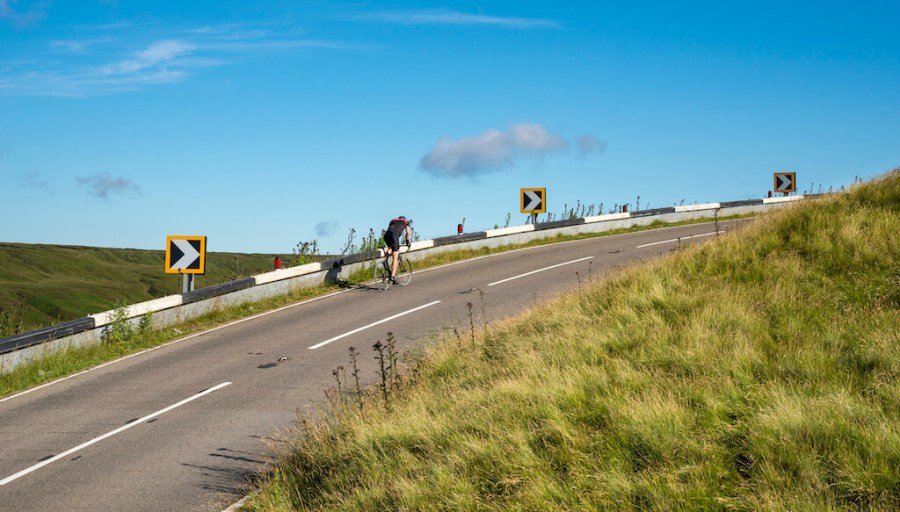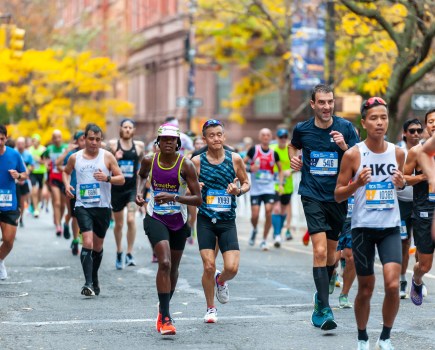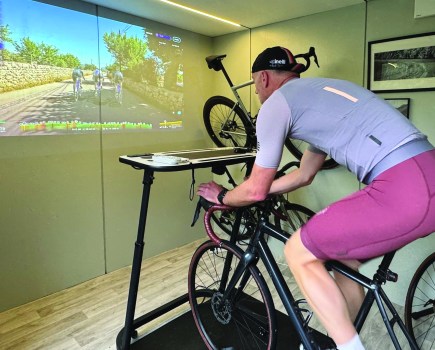World record ‘Everesting’ cyclist Sean Gardner’s best advice to get better at cycling up hills…
Kit yourself out with the best cycling shoes – you’ll need then to clip in for the climbing challenges that lie ahead.
The first Everester was George Mallory in 1994, who wanted to mark the 70th anniversary of the disappearance of his grandfather on Mount Everest.
The concept of Everesting is fairly straightforward: all you need to do is find a hill with a high enough gradient (between 6-12% minimum is ideal) and cycle up (and down) it enough times to climb 8,848m – equivalent to the height of Mount Everest.
The reality, though, is far from simple; I found it to be one of the most mentally and physically draining endurance challenges I’ve ever done.
Back in September, on a mild morning in Virginia, USA, I managed to complete my Everest attempt in less than seven hours, breaking the previous world record and creating a new one of six hours, 59 minutes and 38 seconds – all tracked using the advanced mapping features on my Hammerhead Karoo cycling computer.
For anyone keen on pushing themselves, or just looking to improve hill climbing, here’s how to get better at cycling up hills…

1. Break the climb into segments
It’s important to have short-term, achievable goals in mind throughout a climb. To get better at cycling up hills, you need to understand hill climbing is as much of a mental challenge as a physical one. Having short-term goals gives you something to hold onto during the tough moments and push through.
They might be as simple as getting to the next postbox or bend in the road. If you divide the ascent into manageable pieces, it will be much easier to comprehend.
2. Gear up
With more challenging uphill cycling rides, such as the Everesting routes, having a high-quality cycling computer, such as the new Karoo 2, is an important part of cycling kit that I always take with me.
By showing you how far you’ve climbed already and how far you have left, it keeps you motivated. I find it helps me get to the next point of the climb both mentally and physically, giving a sense of achievement at every stage.
3. Pace yourself
Think of it as a marathon, not a sprint. I’ve seen countless cyclists set off ridiculously fast at the base of a climb and blow sky high when they get halfway through.
If you keep a steady pace the whole time, you’ll overtake the rapid starters and end up completing the climb faster.
Definitely work out how long it will take you to reach the summit beforehand – that way, you have an idea of the pace you need to go at.
4. Practise sitting and standing
Quite often when cycling up longer climbs, sudden steeper inclines or coming out of a hairpin bend requires you to stand up to harness a bit of extra power.
Doing this effectively and efficiently requires plenty of practice – start on small hills on your commute or weekend bike rides and work up from there.
5. Enjoy the view
Big climbs will often come with spectacular views of the mountains or the surrounding countryside. Reward your hard work in getting to the top by bringing a small picnic and finding a vantage point to soak in the view – it will make the descent all the more enjoyable.
The UK is not short of incredible spots to start your training either, so even if you just fancy a new cycling route or a cardio challenge, there are some stunning landscapes to immerse yourself in.
5 best UK cycling climbs
The team at Hammerhead have outlined five routes from across the UK to get you started, along with how many repeats you’d need to do to conquer ‘Everest’.
Llangynidr Mountain, Merthyr Tydfil
Gradient: 7%
Distance: 5.86km
Height gain: 400m
Everesting repeats required: 22 (161km)
Rosedale Chimney, North York Moors
Gradient: 14%
Distance: 1.3km
Height gain: 183m
Everesting repeats required: 49 (126km)
Ditchling Beacon, South Downs
Gradient: 9%
Distance: 1.45km
Height gain: 143m
Everesting repeats required: 62 (180km)
The Stang Hill Climb, North Yorkshire
Gradient: 7%
Distance: 3.75km
Height gain: 253m
Everesting repeats required: 100 (241km)
Tak-Ma-Doon, Glasgow
Gradient: 6%
Distance: 4.3km
Height gain: 260m
Everesting repeats required: 35 (150km)
Related content:












